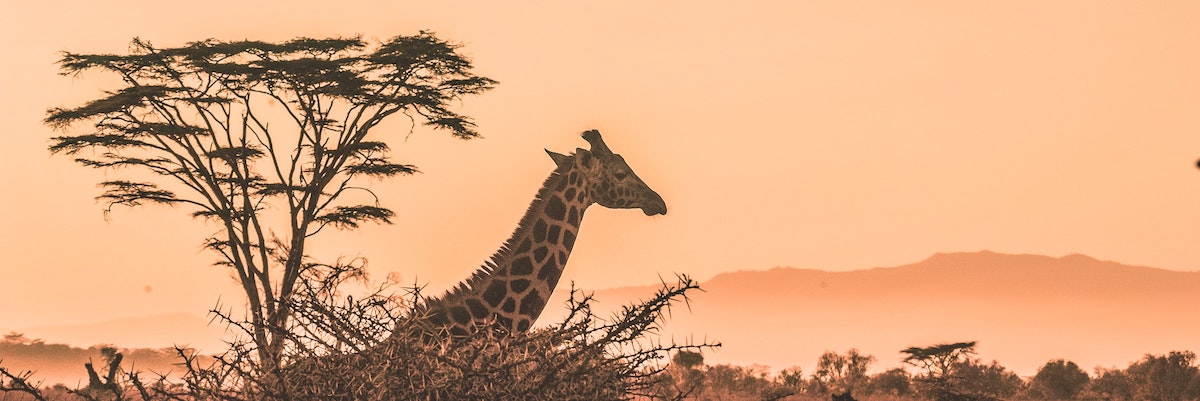You are looking for your next adventure and you have picked an East African safari? You have been told abut so many options, many packages and ultimately, not sure of how many days you should allocate to this journey?
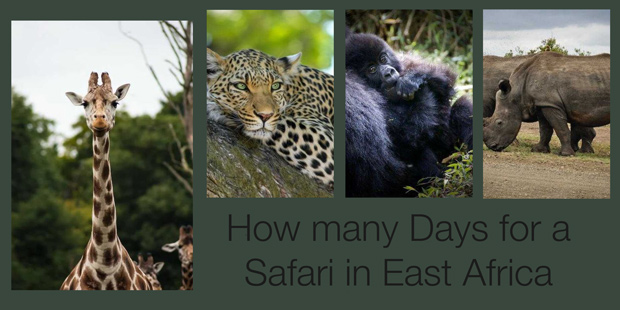
We will discuss the optimal amount of days that one should spend in a Safari around East Africa, to enjoy the trip the most, and squeeze all the unique experiences.
An African safari is, perhaps, one of the most once in a life time experiences that a person can live. A safari is such an extraordinary iconic experience that it has probably crossed pretty much everyone’s minds to do it at least once.
The word safari was born originally in Kenya, where the Masai tribal people used to apply to explain the concept of “making a journey” back and forth in the long distances routes that the Kenyan people had to walk to reach their targets.
Imagine those mind-blowing landscapes, exotic beaches, distinctive and amazing wildlife and the stunning culture of their people. Your safari in East Africa will be just a dream come true!
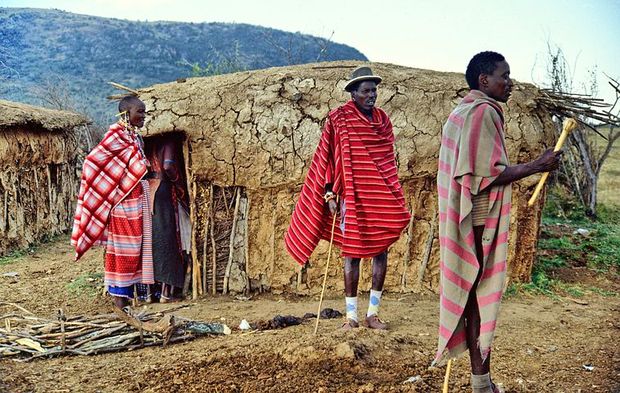
For first-time travellers, East Africa is the right place to start off in this beautiful continent. The leisure, the wildlife, the people, and the absolute stunning scenery, there is so much to look forward to in a safari in East Africa.
The regions in East Africa where you can find the best and most popular safaris are the most eastern areas of the continent like Tanzania, Kenya, Uganda, Rwanda.
Thanks to the striking geographic landmarks of East Africa, such as, Mount Kilimanjaro, Mount Kenya and others like Rwenzori Mountains, Lake Victoria and Lake Tanganyka, the massive wildlife congregation in this place is patent everywhere.
From huge wildebeest stampedes to big feline and elephant gatherings, a safari in East Africa is just a breath taking opportunity.
Not only, wildlife thrive in the Savannah, but also, in the steep and sharp mountains of Uganda and Rwanda.
Big and rare primates prosper and flourish in incredible areas of Bwindi Impenetrable Forest National Park and Volcanoes National Park making a safari in this part of Eat Africa, the fascination of every traveller.
This is because no other wildlife can possibly compare to encounter mountain Gorillas and relative species so up close in their own ecosystem, as well as, breathing the deep green rainforest that make their homes.
Due to its dry and stable climate and cool temperatures, a safari in East Africa can be a year round destination, where the resident wildlife, the open Savannah and misty jungles are ready to thrive in no matter when in the year you decide to go.
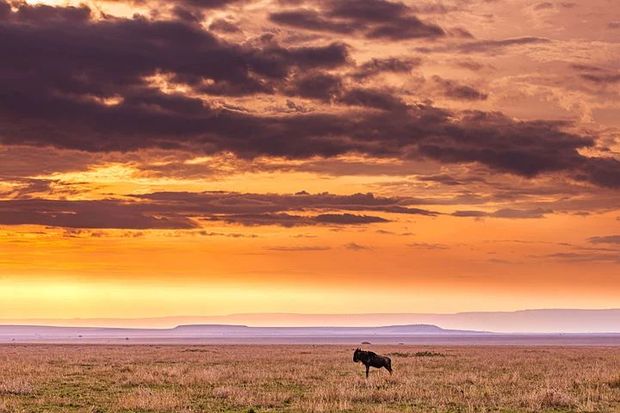
Deciding which safari in East Africa to undertake can be challenging as there are so many options. From Kenya and Tanzania to Rwanda and Uganda.
Kenya is particularly interesting for those who are after stunning nature panoramas. There are so many national parks and wildlife reserves in Kenya that you can have a dreamy safari only in this country.
Tanzania has also a lot to offer with the Serengeti National Park and the Ngorongoro Crate where you will be able to see all the big cats, elephant herds and any other land animals. To finish off this safari, Zanzibar is very close where you will be able to thrive in the most exotic beaches in the world.
If primates are your main target for your safari plan, then the mounts of Rwanda and Uganda are the place to fulfil your dreams.
Now, all these options, and excitement about all the possibilities you can combine to get everything out of your safari trip can lead to either overbook your trip in terms of days or the opposite to aim short and pack multiple things in a very scarce period of time.
Knowing the optimal amount of days is crucial to enjoy and fulfil a successful safari trip. It is often times that I get asked “How many days should you spend on a Safari in East Africa?”
7-10 days is the average ideal length for a safari in East Africa. This is to avoid spending too much time in flights and transiting to the safari area and to spend little time in the actual safari activities. 7-10 ideas is optimal for the full immersion of the experience in spotting wildlife and the transfer to each different camp. Of course there other factors that might affect the length of the safari adventure, such as, budget, time availability and other personal preferences. For first timers though, it is recommended not undertaking a safari experience in Africa for less than 7 days, as not everyday will be a sensational day to spot those beautiful animals. Staying a shorter amount of time might risk the whole safari dream.
Since a safari in East Africa is for most people a once-in-a-lifetime experience, it is important to make sure to stay enough time to fully live the experience, diversity of the wildlife, birdlife, landscape, culture and the people.
With the stress of this modern society, gathering enough time and money to blow it in memorable holidays is really hard. Hence, your Africa safari will be subjected to your budget and available time. Not only, that, but also, the length of your safari will depend upon your personal preference.
Having said that, the optimal average amount of days that a safari in Africa should take, would be 7-10 days. This is usually to allow for a full day of jet lag and travel recovery, as travelling to those parts of East Africa can be pretty exhausting and also the jet lag can be pretty draining. In total, the optimal amount of days on the ground is from 7-9 nights.
When people approach us, seeking advise on how many days they should book their safari in East Africa adventure, we usually come across with some tourist who either expect to have a really complete and mind-blowing, express safari of about three nights, some of them because they are travelling around the area for business or they even have another location booked and they want a quick safari tour in.

The other kind of people who approach us are the exact opposite, those who want to overshoot their safari experience by two to three weeks, expecting to see every single thing int heir trip and still think that it wouldn’t be enough time.
It definitely makes no sense to do 3-4 days, as most of the packages will include a couple of drives to make sure the entire reserves in the park are covered to ensure the highest number of animal spotting.
Some of the species like rhinos or even leopards might not be as easy to find, sometimes is hard to achieve in the first go. Choosing to do it in such a short period of time will drastically reduce your chances to see the diverse wildlife.
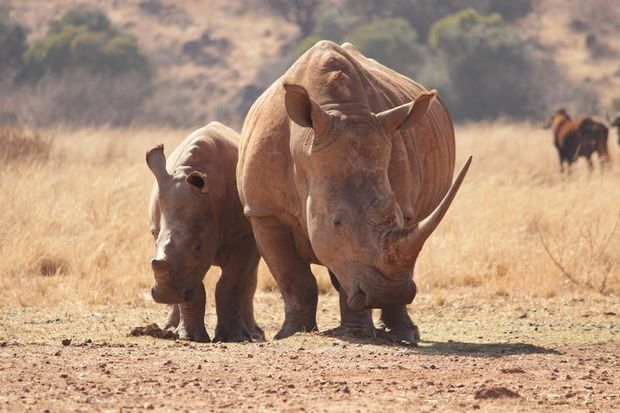
Also when people try to choose a safari in 3-4 days, they tend to pack too many thing in a single trip, trying to see and do little of many things and that leads most of the times to a frustrated trip. Some of the drives do take hours around the reserves until the camp is reached, so allowing so few days can just be expensive and the outcome can be pretty unsatisfactory.
Same applies for those who want to extend it for a long time trying to combine different trips, packages and so on. This can also be frustrating, expensive and exhausting. This might be a little different for very experienced safari travellers, who understand and can reasonably mix, match and extend their trips with no added issues.
In conclusion, typically 7-10 days will be the perfect amount of days to spread out the activities across three or four different parks/camps/lodges in different areas. Thus, to maximise the chances of experimenting the most diverse range of activities, like bush walks, game drives and animal migration processes. This is particularly importing, in order to, minimise the time and money in transport and transit form one place to another.
In order for you to better understand how the length of your stay matters to have a well rounded safari trip, we will next discuss how a prototypical safari schedule looks like and how many days it usually takes per camp or park.
The normal, average camp/park schedule usually entails about 4 hours of driving process and another couple of a hours later in the afternoon. There is some relaxation time in between to recover energy and take a break. The swapping between camps is usually in the middle of the day and it does take a couple of hours everyday, for which, it is, simply, not possible to spend and stay less than two to three days in the camp/lodge/park.
We advise to spend more time per camp to allow for recovery time and catching up in sleep and to fully soak in the beauty of each place. Less number of camps but longer time in each of them, rather than packing too much in too many places, will make of your safari trip an unforgettable memory.
Not only, you will get so much more out of this type of safari trip, but also, you will learn and spot so much more because you will get closer to your guide and staff members, usually locals, who will teach you the little tricks. Also, often times, spending more time in one camp and only transferring to another one or another two, will also be much more budget friendly.
It is understandable that some travellers do want to stay a shorter time per camp in hopes to experience much more diversity by hopping to different camps and areas. Whilst, this is true, staying only a day or two per camp might be risky as some of the animals may not show up all together so you would have spent all that time and money for nothing.
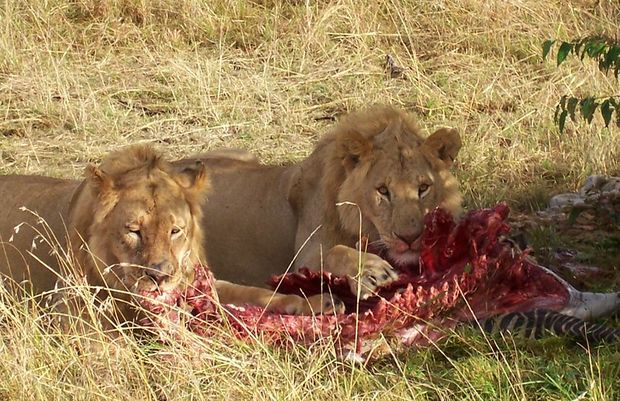
The recommendation is to find the sweet-spot between deep contact and variety. This is the key to get the most possible highlights and fully immersing yourself in each lodge, rather than, a little bit of everything.
These are the general advises for a 7-10 number of days safari trip. However, if you are limited in time and are aiming for less than a week, we advocate for a smaller park instead of a larger one and also to avoid the more remote safari destinations in East Africa. The Nakuru National park in Kenya would be ideal for such a stay length.
To better understand why the ideal amount of days for a safari trip in East Africa is 7-10 days, rather than, a longer or shorter stay, we will then describe how a typical safari day looks like.
On an average day in a safari trip, you would spend around 8 hours driving in the 4x4 after a quick breakfast early in the morning. This is because most animals will be active earlier in the morning and during sunset.
After a couple of hours driving in the morning, you would have seen a couple of incredible animals and you would stop for a lunch break somewhere in the park. Then, the drive in the vehicle is retaken for another couple of hours, where you will spot more stunning wildlife and will see the landmarks of the area.
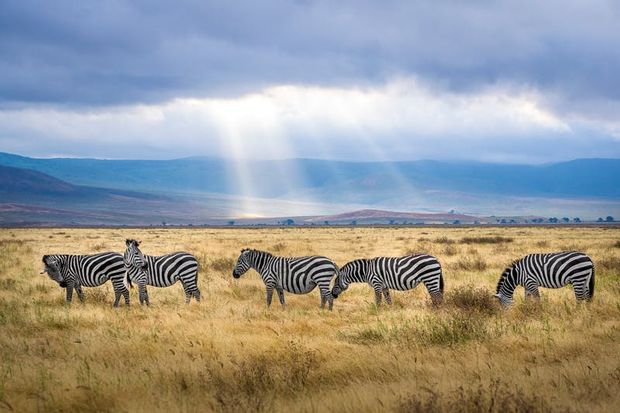
Then you would normally stop for a quick snack and afternoon tea break to then retake the sunset time for either another drive or a walk through the bushes int he park to spot the more night active creatures. Lastly, your day would be concluding with a dinner to then catch on sleep to start over early in the next morning.
As you can see, the day is pretty exhausting and let us tell you that, obviously, a safari trip is not like a day in the zoo. There are chances that you won’t see any animals, there are chances that the weather is not good and your exploring day gets cancelled and there are chances that the car break or whatever the odd circumstance might be.
Also, the optimal amount of days, refer to the actual days on the vehicle without counting flying times and all of that.
For a well-rounded experience and in order to avoid all of those issues, to ensure you see the more rarer animals, the shy ones and to get awesome pictures, allow your trip for enough days. Trust us, you won’t regret it!
Of course there are endless amount of companies, packages and combinations that you can find for a safari trip in Africa. However, I will point out the top 5 ones that are usually the most popular amongst tourists.
There are different types of safaris depending on where specifically in East Africa you go, the season when you travel in, your budget and your preference on what to see, landscape, wildlife and culture wise. All of these factors will also determine the optimal amount of days that you will be spending in your chosen African Safari.
Experiencing the process of The Great Migration is such a unique moment of the largest migration and movement of animals in the world. Even, satellite images can show from the space, the immense wildebeest races that take place in these migrations.
The circuit takes the animals from the Ngorongoro Conservation Area in the north of Tanzania , all the way to the south of the Serengeti. After that, you will then cross to the iconic Masai Mara park in Kenya.

This one is by far the most incredible African safari that there is. Trekking with and around gorillas in the humid mountains of Rwanda, is definitely once-in-a-lifetime experience for any human being. This safari is not just focused on the big primates but it also offers guided walks to see other smaller primates, hikes around the volcanoes and exotic bird watching. After that, you will be transported to the south of the Serengeti in the Ngorongoro Crater to soak in all the big feline circuit with the possibility of extending your stay to go to Zanzibar to conclude this exquisite experience.

This one of the classic safaris to wild primates watching. This type of African safaris are usually by road where you will be driving around with the crew, across Uganda where you will be spotting all sorts of animals, including hippos, zebras, buffalos, antelopes, and endless bird species.
The second part of the trip will take you to the southern-west part of Uganda where you will share your days surrounded by mountain gorillas where you will experience an unforgettable emotional shock.
This safari will conclude with a boat trip where you will spot hippos, crocodiles, leopards, and huge herds of elephants and buffalos.

The last two safaris are also great, however, they do require a bigger budget and more days, making the whole trip quite lengthy. They are combinations of the prior three for a well rounded African experience if you have the time and the money.
You might think that safari trips to Africa are super common, but you would be surprised about how many parts of East Africa are still quite uncharted. If adventure and disconnection is what you are after in your safari dream, East Africa is the place for you. Imagine internet free zones, bare roads, tribes, cultural contrasts, exotic food and distinctive landscapes.
Remember that for the most rewarding safari experience in East Africa, 7-10 days is how many days you should spend in your safari trip. Of course, this is only the recommendations and what it has been proven to be an excellent standard for safari dreamers, but inevitably, we are all subjected to life circumstances, travel requirements and budgets, for which, sometimes we need to adapt to other forms of travel.
There you go! now you know what the ideal length for a safari trip in East Africa should be and the best safari packages that we have found to be the most popular and the ones that will offer the most amazing experiences!
